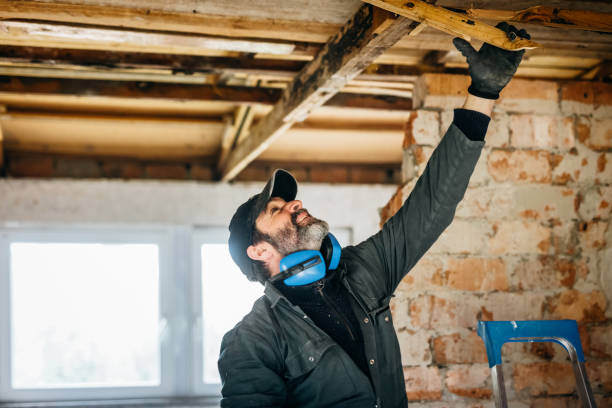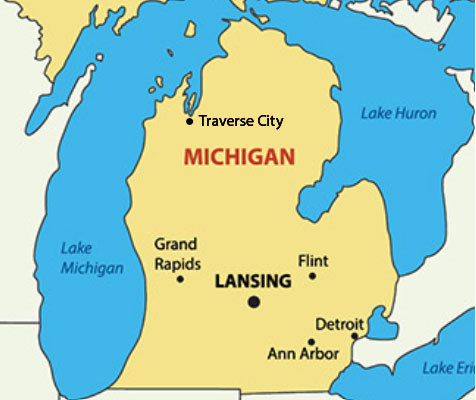
Wood restoration can entail several different things. It could be sanding and recaulking, and at the next level, some wood repair including wood putties and minor wood replacement. On the extreme end is a complete residing, which could run you in the tens of thousands.
You might be wondering, “How much is this going to set me back?” or “Can I handle this myself, or should I hire someone?” At Rhino Shield, we get these concerns, and we’re here to walk you through the ins and outs of exterior wood restoration costs without making your head spin.
We’ve been in the business long enough to know that not every solution is suited for everyone. In fact, while Rhino Shield offers top-notch services with our exterior coatings, we recognize it might not be the perfect fit for everyone. In this article, you’ll get the full scoop on what to expect when restoring the wood on your home, whether you choose to go DIY or bring in the pros. And hey, if our solutions aren’t right for you, we’ll help you figure that out too!
Understanding Exterior Wood Restoration
Exterior wood restoration isn’t just about making your home look good—it’s about extending its life and boosting its value. This process can include various steps like stripping old paint or varnish, sanding to smooth out the surface, repairing damaged areas, and applying new stains or sealants to protect against the weather. Whether it’s your porch, deck, or window frames, keeping the wood in good condition prevents more serious issues like rot and structural damage, which can be far more costly down the road. For major projects, wood restoration can involve significant carpentry work such as replacing and rehanging boards, especially in cases where structural integrity is compromised.
Factors Affecting the Cost
Here’s what determines how much you’ll likely spend on restoring your exterior wood:
- Size and Scope: The larger or more complex your project, the more materials and labor it will require. A small deck will cost less than an entire home’s siding.
- Wood Condition: Good news if your wood is in decent shape—it’ll cost less to restore. But if you’re dealing with extensive damage or deterioration, prepare for extra repair work and higher costs.
- The species of wood: Some wood types are more expensive than others.
- Type of Finish: You get what you pay for with finishes. High-quality options might cost more upfront but can save money by reducing future maintenance needs.
- Local Labor Rates: Depending on where you live, the cost for professional labor can vary significantly. This can affect the total cost as much as any other factor.
Average Cost Breakdown
Let’s talk numbers. You can generally expect:
- Small to Medium Projects: Projects like a fence or small deck might range from $500 to $3,000.
- Large Projects: Restoring the siding on a large home or tackling multiple large structures can easily run from $3,000 to $10,000.
Additional Costs to Consider
It’s not just about painting or sanding. Consider these often-overlooked expenses:
- Preparatory Work: Things like power washing or mold treatment can add to the bill but are crucial for a lasting finish.
- Hidden Repairs: Discovering unexpected issues like rot or insect damage during the project can increase your budget unexpectedly.
- On the extreme end, you may need to reside the entirety of your home, which could run you in the tens of thousands.
Unfortunately, the cost of lumber has gone up a lot in the last 6-7 years. This rise in lumber prices can significantly impact the overall cost of your restoration project.
DIY vs. Professional Restoration
Is DIY the way to go? Here’s what to consider:
- DIY: It might save you money upfront, and it can be a rewarding project. However, without the right tools and experience, you might face redoing the work sooner than expected.
- Professional: More expensive initially, but you’re paying for expertise and durability. Pros know how to handle unexpected issues and can guarantee their work. For major wood restoration involving structural work, you will need a fully licensed contractor rather than just a painter.
How to Save Money on Wood Restoration
Want to stretch your dollars? Here are some tips:
- Get Multiple Quotes: Don’t settle on the first contractor. Shop around to find the best balance of price and quality.
- Choose the Right Time of Year: Sometimes contractors offer off-season discounts during slower winter months.
- Maintain Regularly: Upkeep like cleaning and minor repairs can prevent expensive overhauls later.
The Importance of Regular Maintenance
Regular maintenance like cleaning, staining, and sealing isn’t just cosmetic. It helps fight against decay, mold growth, and UV damage, which means you won’t have to restore as often, saving you money in the long run.
Speaking of which, our Rhino Shield coating is not only UV-resistant, but also has water-repellant properties. This means you don’t have to worry nearly as much about fading and bio growth. This will reduce the number of times you have to do maintenance.
Speaking of which, our Rhino Shield coating is not only UV-resistant, but also has water-repellant properties. This means you don’t have to worry nearly as much about fading and bio growth. This will reduce the number of times you have to do maintenance.
What to Look for in a Restoration Contractor
Choosing the right contractor is crucial:
- Experience and References: Look for a contractor with a strong track record and positive customer reviews.
- Detailed Estimates: A good contractor will offer a clear, detailed estimate that covers all potential costs.
- Licensing and Insurance: Make sure they’re licensed and insured to protect yourself against any liability.
FAQs
- Can I restore my wood in winter? Yes, but it’s best in mild, dry weather.
- What’s the best finish for my climate? Depends on moisture, sunlight, and temperature extremes; your local hardware store or contractor can advise based on local conditions.
Conclusion
Taking on an exterior wood restoration project can be a significant decision, but armed with the right information, you can plan effectively and make the best choices for your home and budget. We hope this guide helps you understand what’s involved and how to approach your project with confidence.
Ready to dive in or need more info? Whether you’re considering a DIY fix or thinking about calling in the pros, start by assessing your home’s needs today. Feel free to reach out to us at Rhino Shield if you think we’re the right fit for your project, or use this guide to help you make the best decisions for your home’s longevity and beauty.
If you’d like to get a free, no-obligation quote for a Rhino Shield coating, click the button below.
















